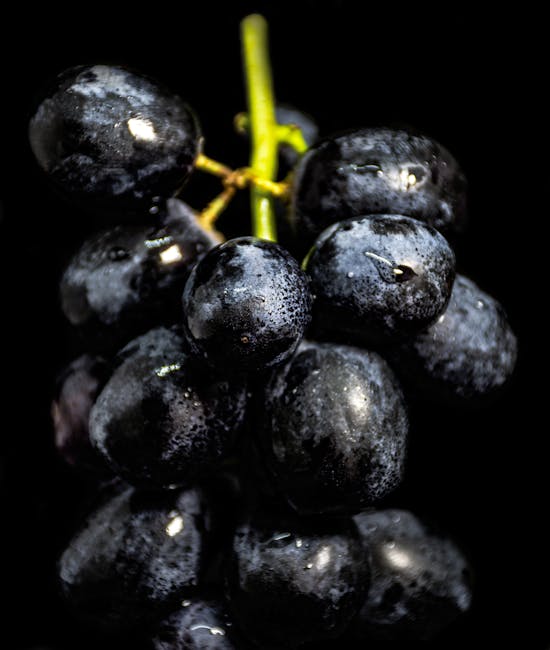If you’ve battled the sniffles (or worse) this cold and flu season, you may wonder if zinc-rich foods can lend a helping hand. Product labels definitely suggest as much. After all, a quick stroll through the pharmacy will show shelves upon shelves of over-the-counter meds and immune supplements all listing zinc as an ingredient.
Turns out, it might not all be marketing hype—at least for some aspects of your sneezing and snotting. One 2012 review and meta-analysis published in the Canadian Medical Association Journal concluded that oral zinc might help shorten the duration of symptoms, but didn’t find compelling evidence to suggest it had any impact on severity. And those findings have been echoed in many studies, according to the National Institutes of Health (NIH), while others have been a little more inconsistent.
Overall, though, the scientific consensus seems pretty clear on one point: While zinc definitely isn’t a cold cure-all, getting an adequate amount of it simply helps your immune system function at its best—an important consideration when bugs are going around. “Zinc plays a huge role in our immune system, as it is a component of a lot of the different cells” that make it up, Vincci Tsui, RD, a certified intuitive eating counselor based in Canada, tells SELF—helping neutrophils, T cells, B cells, natural killer cells, and others grow and develop normally, for one.
But it’s not just about your immune system either. Even though we only need small amounts of the mineral, those tiny portions are necessary for a whole bunch of other vital functions—DNA creation, wound healing, and normal growth and development, to name a few. What’s more, zinc also plays a role in your sense of taste and smell, so you have the mineral to thank for your ability to detect and enjoy the rainbow of complex flavors found in food, from a tart cherry to a salty cheese.
Since our bodies can’t produce zinc on their own, we need to get our daily ration from an outside source—like the stuff we eat. For men and women over the age of 19, the recommended dietary allowance (RDA) sits at eight and 11 milligrams, respectively (more if pregnant or breastfeeding). While most people in the US and other developed countries take in plenty of zinc, deficiency isn’t unheard of—especially in vulnerable populations like elderly people and folks with a history of gastrointestinal surgery or digestive disorders, Thanh Thanh Nguyen, MS, RDN, a registered dietitian at Mendinground Nutrition, tells SELF.
Still, because zinc is so vital to our bodies, there are legit reasons to make sure you’re taking in enough of it. Many foods contain a decent amount of zinc (and some are even heavily fortified with it), but certain ones are especially high in the mineral—and one in particular stands head and shoulders above the rest. Here are eight naturally zinc-rich foods that span land and sea, listed in order of lowest to highest content.
1. Beans
Let’s start off with the infamous musical fruit (which, full disclosure, can make you more prone to ripping a big one). Beans are a solid source of zinc for vegetarian folks—and overall “such a convenient and quick way to get lots of different vitamins and minerals in your diet,” Tsui says. Just half a cup of canned kidney beans contains 0.6 milligrams of zinc, according to the NIH—about 5% of the RDA. Immature soybeans (a.k.a edamame) will offer about double that, at around two milligrams per one cup, according to the USDA.
Beans are also rich in fiber, protein, and other nutrients, but in terms of this list, they come with one significant caveat. Plant-based zinc-rich foods (like beans, nuts, and seeds) tend to provide a bunch of something else too: compounds called phytates that actually hurt your body’s ability to absorb the mineral (as well as other nutrients). So vegans, vegetarians, and people who follow a plant-based diet are actually at higher risk for zinc deficiency.
Now, this doesn’t mean you should avoid eating beans or other plant-based foods as a source of zinc, according to Tsui—just that “you need to be more intentional” about your eating patterns. Basically, you’ll “need to eat a lot more of the food source in order to get enough,” Nguyen says. However, she adds, certain food preparation methods can help remove some of the phytates, such as soaking and fermentation.
2. Lentils
Number two on our list is another type of legume. Like their bean cousins, lentils are a fount of nutrients both micro and macro: protein, fiber, iron, and potassium, to name a few. Half a cup of boiled lentils contains 1.3 milligrams of zinc, 12% of the RDA, according to the NIH. Just don’t forget about those pesky phytates.
Zinc content aside, lentils have a practical advantage over some other legume varieties if you’re using the dry bagged stuff rather than the canned: “You don’t need to soak them ahead of time,” Tsui says. (Then again, if you’re looking to break down some of those phytates, soaking might not be a bad idea anyway.) If you’re struggling to cook with lentils, Nguyen recommends starting with a preseasoned packet and going from there. Often, she says, she’ll “turn it into a stew situation and have it with pasta or rice.”
3. Pumpkin seeds
Honestly, what aren’t pumpkin seeds rich in? You may already know that these seeds are packed with protein and magnesium—and now you can add zinc to that list. One ounce of roasted pumpkin seeds contains 2.2 milligrams of the mineral, 20% of the RDA, per the NIH.
Plus, they’re super versatile. Use them as a topping on your next salad, turn them into a sweet or spicy afternoon pick-me-up, or mix them into breakfast dishes like yogurt, porridge, and granola. For a double hit of zinc, use oats or plain Greek yogurt as a base. Both are solid sources of the immune-boosting mineral in their own right, packing 2.3 milligrams per one cup and one milligram per six ounces, respectively. (Prefer a bowl of Rice Krispies or Special K to yogurt, porridge, or granola? No problem, because many cereals are fortified with zinc in the US!)
4. Chicken, turkey, and other types of poultry
Bird is the word as we segue from plant-based foods to animal products. Roasted turkey breast contains 1.5 milligrams of zinc per three ounces, 14% of the RDA, according to the NIH. Meanwhile, the same amount of cooked chicken breast contains around 0.8 milligrams of zinc, per the USDA.
For maximum zinc content, you’ll want to choose dark meat over light meat—say, chicken thighs over chicken breasts, according to Tsui. Thanks to the increased myoglobin, she explains, “these cuts of meat [are generally] darker and therefore generally higher in zinc and in iron.”
5. Eggs
While we’re on the subject of poultry, poultry products are pretty zinc-y too. One large egg contains 0.6 milligrams of zinc, 5% of the RDA, according to the NIH. (Other animal products are no slouch either. We already mentioned plain Greek yogurt, but milk and cheese also don’t disappoint. Cheddar cheese comes in at 1.5 milligrams per 1.5 ounces. And 1% milk isn’t far behind, at one milligram per cup.)
Of course, eggs are pretty pricey right now, thanks to an ongoing bird flu outbreak that has killed millions upon millions of laying birds, as SELF previously reported. If you’re trying to use your existing stock sparingly, you can always stretch out your morning omelet or scramble by adding one of these 10 ingredients to the pan for a more filling breakfast. (Some of them will even give an extra bump of zinc too!)
6. Fish
Not only are fish species like anchovy, herring, mackerel, and sardines rich in zinc, they also pack a bunch of protein, iron, vitamin B12, and omega-3 fatty acids. In the case of sardines (canned in oil, with bone), a three-ounce serving offers 1.1 milligrams of zinc, 10% of the RDA, according to the NIH. Meanwhile, the same amount of cooked salmon will deliver about half that: 0.5 milligrams. Besides, tinned fish is super in right now—you can use it in everything from sandwiches to salads to soups to dips.
7. Beef, pork, and other types of meat
By the numbers, beef is a heavy hitter. In fact, it accounts for 20% of the US’s annual zinc intake from food, according to the NIH. Roasted beef (bottom sirloin) contains around four milligrams of zinc per three ounces, 35% of your RDA, while the same amount of broiled pork chops (bone in) contains around two milligrams. Of course, roasting and broiling are only two of the many potential cooking methods available to you. Nguyen’s a big fan of braised pork, as well as ground pork in her Vietnamese vegetable soup.
What’s more, organ meat is especially rich in zinc, according to Tsui. “Liver is probably going to be the most common one, especially in Western cuisines,” she says, but plenty of other types are edible too, including brain, heart, kidneys, intestines, stomach lining (tripe), pancreas, thymus, and tongue. Braised or pan-fried beef liver contains around 4.5 milligrams of zinc per three ounces, according to the USDA.
8. Oysters
Ah, our final entry—and heaviest hitter. When it comes to zinc content, oysters “are in a league of their own,” Nguyen says. According to the NIH, these slurp-worthy shellfish contain more zinc per serving than any other food, though the exact number can vary depending on the location and season. Raw Eastern oysters contain 32 milligrams of zinc per three-ounce serving size—nearly 300% of the RDA. Cooked Pacific oysters offer slightly less zinc, but still a substantial amount—28 milligrams for that amount, or 256% of the RDA. “Oysters tend to vary in size quite a bit,” Tsui says, making it hard to estimate exactly how many oysters equals three ounces. However, she shares a good rule of thumb: “For any sort of meat or seafood, four ounces is about the size of the palm of your hand or a deck of cards.”
Classically, oysters are eaten raw straight from the shell (maybe topped with a drizzle of hot sauce if you’re in the mood for a little kick). Just bear in mind that the raw route can carry some health risks, like hepatitis A, the stomach bug norovirus, and the bacterial infection vibriosis. But you can always minimize your oyster-borne disease risk at home by cooking them thoroughly—say, in soups and stews, like a hearty clam chowder, particularly if that chewy texture when raw just isn’t for you. “The best way to incorporate anything into your diet is to make dishes that you actually will enjoy eating,” Nguyen says.
And if you’re not a fan of oysters regardless of the prep method, other shellfish options can also fill that zinc hole. Crab, for one, “is a great source,” Nguyen says. Cooked blue crab contains 3.2 milligrams of zinc (29% of the RDA) per three ounces. By comparison, cooked shrimp contains 1.4 milligrams. Whichever one you choose, you’ll load up on two nutrients: not only zinc, but also—drumroll, please—vitamin sea.
Related:
- 9 Foods That Might Seem Ultraprocessed—But Actually Aren’t
- 10 High-Protein Veggies That Will Make Any Salad or Side Way More Satisfying
- 10 Things to Add to Eggs to Make Them More Filling
Get more of SELF’s great service journalism delivered right to your inbox.



